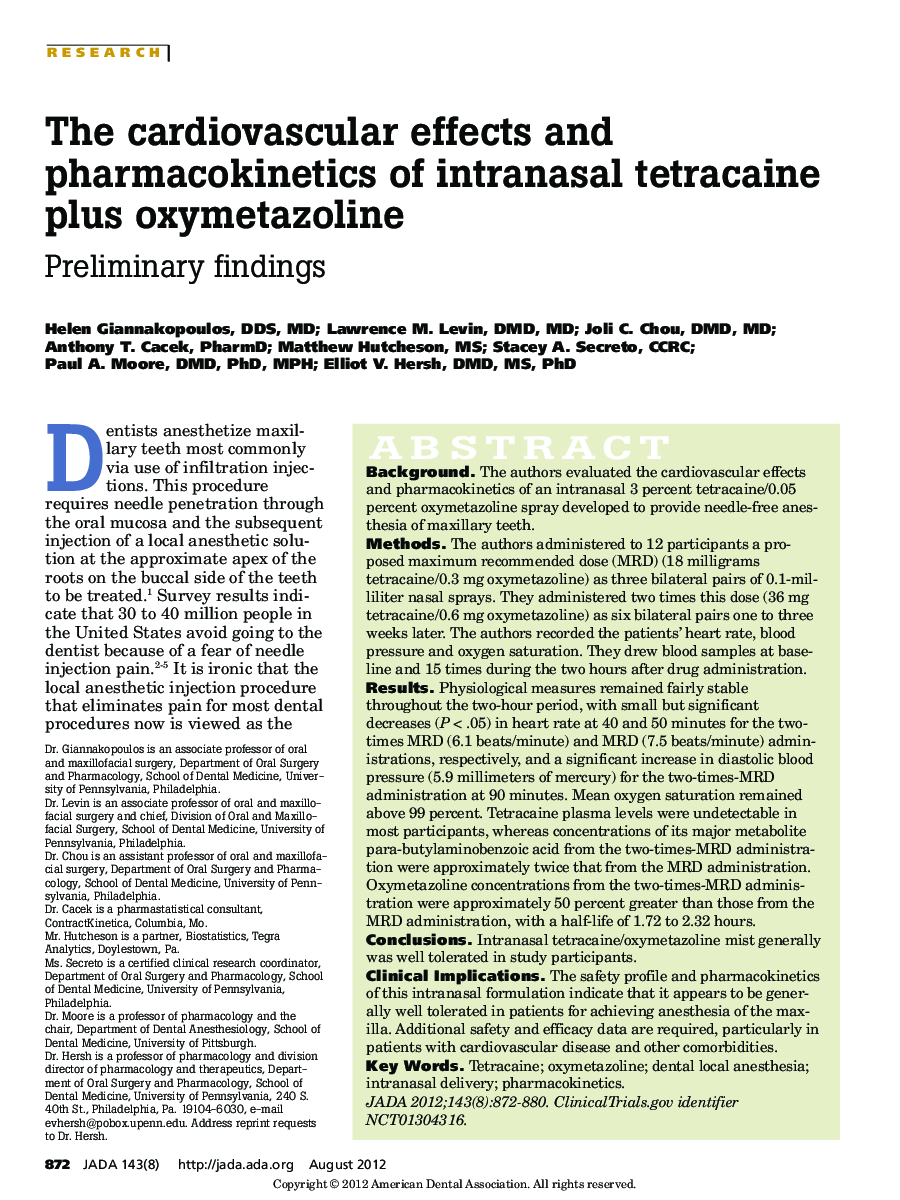| Article ID | Journal | Published Year | Pages | File Type |
|---|---|---|---|---|
| 3137579 | The Journal of the American Dental Association | 2012 | 9 Pages |
ABSTRACTBackgroundThe authors evaluated the cardiovascular effects and pharmacokinetics of an intranasal 3 percent tetracaine/0.05 percent oxymetazoline spray developed to provide needle-free anesthesia of maxillary teeth.MethodsThe authors administered to 12 participants a proposed maximum recommended dose (MRD) (18 milligrams tetracaine/0.3 mg oxymetazoline) as three bilateral pairs of 0.1-milliliter nasal sprays. They administered two times this dose (36 mg tetracaine/0.6 mg oxymetazoline) as six bilateral pairs one to three weeks later. The authors recorded the patients’ heart rate, blood pressure and oxygen saturation. They drew blood samples at baseline and 15 times during the two hours after drug administration.ResultsPhysiological measures remained fairly stable throughout the two-hour period, with small but significant decreases (P < .05) in heart rate at 40 and 50 minutes for the two-times MRD (6.1 beats/minute) and MRD (7.5 beats/minute) administrations, respectively, and a significant increase in diastolic blood pressure (5.9 millimeters of mercury) for the two-times-MRD administration at 90 minutes. Mean oxygen saturation remained above 99 percent. Tetracaine plasma levels were undetectable in most participants, whereas concentrations of its major metabolite parabutylaminobenzoic acid from the two-times-MRD administration were approximately twice that from the MRD administration. Oxymetazoline concentrations from the two-times-MRD administration were approximately 50 percent greater than those from the MRD administration, with a half-life of 1.72 to 2.32 hours.ConclusionsIntranasal tetracaine/oxymetazoline mist generally was well tolerated in study participants.Clinical ImplicationsThe safety profile and pharmacokinetics of this intranasal formulation indicate that it appears to be generally well tolerated in patients for achieving anesthesia of the maxilla. Additional safety and efficacy data are required, particularly in patients with cardiovascular disease and other comorbidities.
